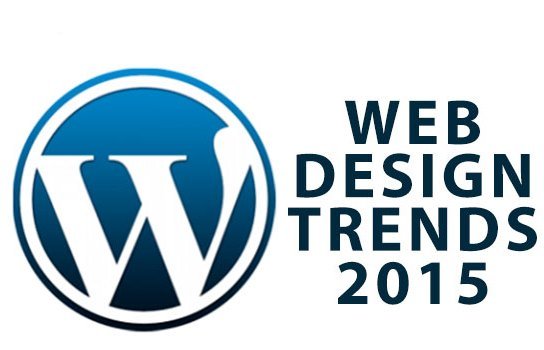Some of the WordPress Website Design Trends being Implemented in 2015
 This article focuses on the main techniques being employed by some of the top WordPress website designers.
This article focuses on the main techniques being employed by some of the top WordPress website designers.
Mobile First
Although this trend is not new, there is a continually growing demand for creating fully responsive websites. It is also being promoted by Google as being an industry best practice. In fact some web designers have received notification from Google that if their website is not mobile responsive, they will be penalised with respect to rankings.
Minimalism
In early 2014 mobile Internet usage surpassed PC Internet usage which impacted website design. Mobile orientated websites are of a more elegant and sleek design due to their smaller screen sizes. Simple colour schemes, no shadows or gradients and lots of white space are key elements in the design.
This design technique also plays in modern websites design.
Flat elements
Again, this design technique is not new and has been gaining popularity over the last three years. Initially introduced by Microsoft for Windows 8, most people were initially impressed.
It has been adopted into some website designs, specifically with elements like icons, menus and images. However, flat element design does sometimes includes subtle gradients and textures in order to give a more pleasing view to the user.
Cards or tiles
This technique follows on from flat elements and Microsoft Windows 8. It is basically just another way of structuring content on the website and fits perfectly on both desktop and mobile devices.
Using tiles to organise content works perfectly with other website design trends in 2015. They can easily to the screen size of handheld devices or any device.
Parallax
A parallax scrolling effect has been ‘trendy’ for the last few years. As the technique develops, a common technique uses mouse movement or page scrolling to achieve a three-dimensional effect.
The paralax technique is put to good use in single page websites along with a storytelling style of content presentation.
Navigation
Techniques like sticky menu or fly-out menus are popular and facilitate quick access to website navigation for users. With the growing trend towards creating minimalist designs, a fly-out menu can help save on space. The Navicon mega drop down menu, or the hamburger menu, provides full-screen navigation. This is likely to increase in popularity.
Typography
Traditionally print media has had special emphasis on typography. Slowly, this emphasis has been migrating into website design. Use of specialised fonts allows for the easy integration of media and written content thus resulting in a more harmonised and balanced look.
Lazy loading
The lazy loading technique not only visually enhances websites but allows for faster loading times. Although not a new technique, it’s implementation will increase due to the mobile web.
As web design becomes more complex and heavy in content it uses more resources. This technique allows for the prioritization of loading of images above the fold.
Full-width layout
Website design is moving away from the more traditional 960px page width. Full width design fills the screen with a feeling of openness and a lack of restrictions.
Dynamic backgrounds
Using videos as a background can create a visually pleasing and a more atmospheric impression on a website. They can be separated into different blocks of content to help in the storytelling technique.
One of the best ways to get your message across is to use a visualisation and this is a growing trend. The use of Infographics can quickly draw attention to the key messages by presenting data visually.
Storytelling
Having good website content is essential but presented in the form of a story can captivate the audience. Storytelling that captivates can be achieved by using images, videos, backgrounds, illustrations, mascots, parallax scrolling, social media, and of course, words.
Ghost buttons
Ghost buttons can enhance clean minimalist designs. Basically a normal button with outline and transparent background. They are just another way of captivating the audience.
Scrolling over clicking
Scrolling has gained in popularity mainly because of the growth of mobile web. Users have become accustomed to scrolling through pages rather than clicking. The website content is on the main page. Pages will provide a more interactive and dynamic scrolling experience.
Micro-interactions
The addition of micro-interactions to a website enhances the user experience. These can take the form of posting a status, rating a reviewed product, etc. Using a pop-up email sign-up form can add to the website’s interactivity thus increasing user engagement.
Infographics
When users views a website, they need to understand its message without having to dig through screeds of written text. A well-designed infographic helps simplify a complicated subject or turn a boring subject into a captivating experience.
Conclusion
Quite a number of these trends I find really interesting and will be implementing them in my future website. On the other hand, I have a personal hatred for Microsoft Windows 8. Therefore, I doubt very much if I will be implementing flat elements and cards or tiles.

